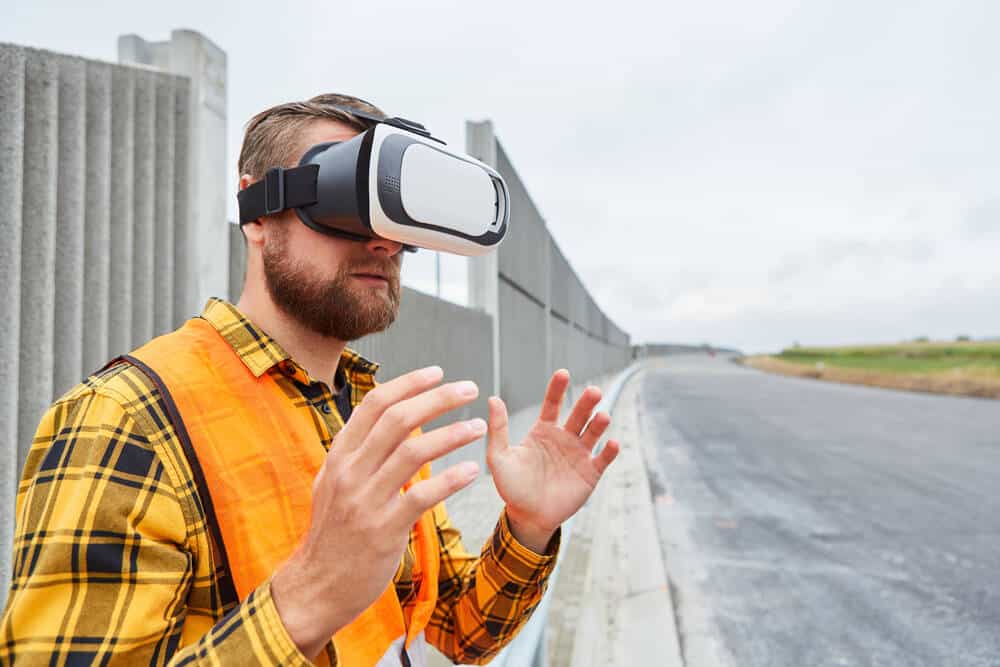- Solving real-life property crises with virtual solutions
- How do you value a virtual property?
- The first ‘brickless’ construction company
- Issues of scalability
- The future of virtual land and property ownership
Ask almost any millennial or Gen Z-er how they feel about getting themselves into the property market and they will offer you a muted response like: ‘It’s difficult… if not impossible’. It’s no mystery why, as director of broker Your Mortgage Decisions Dominic Lipnicki explains, “House prices have risen far faster than wages, this is further complicated by rents increasing above inflation”. In an environment like this, it is not surprising that the tech-savvy younger generations are looking to videogames for potential ‘alternatives’ to unaffordable property.
Videogames like Second Life and The Sims have, for many years, allowed players to engage in the fantasy of designing a virtual property that fulfils their deepest desires for ownership. Now, with the emergence of technologies such as Web 3.0 and blockchain, innovative groups are taking things a step further, and creating a virtual real estate network that allows them to engage in most of the things possible with brick-and-mortar properties, including business, recreation, ownership and price speculation.
Virtual real estate is but one aspect of the emerging metaverse, a hyper-immersive VR reimagining of the online space that, in many ways, also mirrors the physical world. It is made possible by the rise of Web 3.0, which revamps our current World Wide Web to incorporate token-based economics and the utility of the blockchain. These technologies have advanced significantly in the past decade, and are now at the point where real-world use cases are not just possible, but, some speculate, inevitable.
The rise of virtual real estate markets certainly feels like the next logical step, after NFTs took the art world by storm in 2021. Using the same concept of digital ownership as NFT art, transactions are stored on the blockchain, ensuring property rights are thoroughly secure in an otherwise decentralised and unregulated space. The spaces are measured in pixels and exist within a finite virtual plane, much in the same way that a shop exists in a videogame hub world. The finite nature of these spaces creates scarcity, meaning that value is subject to the same factors as it would in real life. If there was unlimited space to construct digital property on, it would be much more difficult to justify its value!
Solving real-life property crises with virtual solutions
Like all things that spring forth from the crypto space, digital real estate thrives on its proposed real-world use cases. It promises to relieve the burden of overinflated property costs and scarcity that are affecting so many people and businesses today. Imagine if you could do away with the challenge of affording a brick-and-mortar store and shift your business fully online – while still retaining a location that can be ‘visited’ in the same way it could in real life. You would get to retain the personal touch, the feeling of ‘cosiness’ that is lost in typical online shopping experiences.
Depending where you are situated, it may even be preferable. Consider, for instance, the ongoing construction crisis in Malta, where a severe lack of regulation has led to buildings being built so cheaply and inadequately that a number have already collapsed due to a lack of structural integrity. Even attempts to bring regulation into the industry have been half-hearted – partial, at best. Understandably, the Maltese are beginning to think outside of the box to find workable solutions.
Some in the tech industry are speculating that, at least in part, the construction issue could be alleviated by shifting property ownership into the digital realm. Land currently used for “mall after mall” could instead be repurposed for renewable energy, revitalising the island and turning it into an environmentalist paradise. One of the best use cases for digital real estate is, after all, luxury shopping – something the Maltese economy thrives upon. The single most expensive purchase of digital real estate was for this exact purpose: Canadian decentralised finance firm Tokens.com recently spent $2.2 million on an approximately 1860m space “in the heart of Fashion Street in Decentraland”. This is clearly where digital real estate holds the most allure to investors. However, it cannot be denied that part of why luxury shopping is so vital to the Maltese economy is because of tourism, and that visitors to a foreign country may be less inclined to embrace digital storefronts.
There are undeniable advantages, too. Brick and mortar stores, despite experiencing a small boom after the de-facto end of the COVID lockdowns, are still generally less profitable than their online counterparts. Between rental and business rates, the cost of maintaining a physical property is insurmountable for many small businesses, and for many, it is nearly impossible to achieve staying power under these trying conditions. Those who wish to retain the ‘feel’ of brick-and-mortar when embracing e-commerce would do well to invest in digital real estate.
Consider the success countless small businesses have enjoyed on Facebook, where over one billion unique users registered in the first quarter of 2021 alone, and one million businesses already have a presence. If and when Meta’s metaverse platform is fully developed, it could have a legitimately transformative effect on the nature of e-commerce. The benefits to those who have a digital real estate presence could be powerful against their more ‘traditional’ online competitors.
Of course, this all applies to the world of commerce – there is no getting around the fact you cannot house your family, or take a nap inside of digital property. Well, you could take a nap, but you’d still have to do it inside a physical property, otherwise you may get a bit cold outdoors in your VR goggles.
How do you value a virtual property?
Of course, one of the most alluring prospects of property ownership, as opposed to rental, is that property values appreciate over time – reliably outpacing inflation for decades. It goes without saying that things in the crypto space have a habit of rising in value, too. The space’s most famous token, Bitcoin, cost $1,139 in January 2017, and soared to dizzying heights of $68,990 in November 2021.
Estimating the value of your digital real estate follows many of the same principles as its real-world counterpart. First of all, location is everything. Platforms serve as a proxy for cities, and prices vary greatly, depending on the platform you choose to establish your real estate on. The space’s most popular platform, Decentraland, benefits from being the first of its kind, with a long development history leading up to a launch in February 2020. The cumulative value of Decentraland property is now hovering around $2 billion, indicating that, for a lot of people, there is real value in investing in these spaces. In the first weeks of August 2022, the average price of a property ownership NFT was $4,600 – which may seem high, but remains a tiny fraction of what an equivalent real-world property would cost.
Of course, properties within Decentraland vary in cost depending on their centrality and their prestige. Parcels of land on the outskirts naturally cost less than places in the centre. You would also, unsurprisingly, be expected to pay more for your plot of virtual land if it is located close to a major landmark or a celebrity’s property. Property size is another factor when considering evaluation, measured in terms of pixel count instead of square metres – although approximate measurements in the latter are still often used as shorthand for describing its size. It is an evolution of the concepts of the old world property ladders, digitised to spark the imaginations of new generations.
While it is difficult to make a reliable estimate of where we can expect digital property values to be in twenty years time – the survivability of crypto isn’t even guaranteed. A major recession, or an outbreak of war may send the entire market into a terminal decline. It remains a volatile and untested space, lacking the tried-and-true reliability of the stock market and physical property. The daring and those already deep into crypto profits will be quick to tell you, however – the sooner you get in, the better.
“We’ve all been on the receiving end of the supply-chain shortages, climate change, a global pandemic and more. Now, we’re designing a community that is truly future-ready in every dimension.”
Nelson Delgado, founder of Brickless Developers
The first ‘brickless’ construction company
The skillsets involved in digital construction are, of course, completely different – part and parcel of the fact that they are ‘brickless’. They are, like all things blockchain-adjacent, designed by programmers. That does not necessarily mean, however, that being awesome at code is a barrier to entry for platforms like Decentraland. After all, being able to build your own house is not essential for purchasing a plot of real-world land. You can always contract these things out.
One enterprise is making massive strides in terms of finding real-world use cases for their digital real estate. The aptly-named construction group Brickless Developers are responding to the problem of a lack of affordable housing in Florida with a grand vision: designing a city of the future which is entirely self-sufficient. This real-world plot comprises 834 acres in St. Lucie county, and comes with an enticing twist – a fully digital replica of the town which exists on the blockchain.
A hybrid physical/virtual town opens up a wide array of exciting possibilities for innovation. One straightforward example is the ability for prospective buyers to navigate the town wearing a VR headset to get an impression of how it will look when finalised. It also offers the potential for democratised input into how the town will actually look. Investors have the ability to modify their future home’s appearance to match their personal tastes. These customisations will be reflected in their future home’s final design – within reason. You still can’t bury your home three-hundred feet underground, or construct it out of solid diamond. This is, after all, still reality!

The town, Port St. Lucie, will have another critical advantage. Many of its functions will be able to endure through all kinds of hardship – thanks entirely to its twin existence in both physical and virtual planes. The enterprise founder, Nelson Delgado, explains his thinking: “We’ve all been on the receiving end of the supply-chain shortages, climate change, a global pandemic and more. Now, we’re designing a community that is truly future-ready in every dimension.”
Because a virtual town does not need to worry about things like airborne disease, it can continue to function even in the midst of a COVID outbreak. People can still congregate socially, attend town meetings and even go shopping locally – no need to break a sweat about getting ill. Imagine going to a virtual cinema, or even bowling with your friends. In Port St. Lucie, this would be entirely possible. Furthermore, it is very understandable that a town trying to establish itself on the Florida coastline is looking for innovative solutions in the midst of rising sea levels. It is easy to imagine Brickless Developers’ innovations eventually seeing widespread use, because it is more than a freestanding commercial project. Rather, it finds problems with our existing approaches to construction and infrastructure, and tries to solve them with cutting-edge technology.
“We are 50% of the way there. We are democratising access to the broadest number of participants possible to anyone and everyone who wants to verify the validity of the chain.”
Vitalik Buterin, founder of Ethereum
The blockchain trilemma
Of course, blockchain technology is not perfect, and these problems will naturally impact the world of virtual real estate unless they can be resolved. The most urgent practical problem is known as the ‘blockchain trilemma’. Essentially, current blockchain technology is only capable of meeting two of three essential requirements at any given time: security, decentralisation and scalability. This is because of the nature of decentralisation.
Ethereum, which Decentraland is built upon, is currently only capable of handling around 30 transactions per second. Ethereum 2.0 promises to handle as many as 100,000 per second, but has been trapped in development hell for years with no end in sight. Ethereum investor Vitalik Buterin remains confident in its future, however: “We are 50% of the way there. We are democratising access to the broadest number of participants possible to anyone and everyone who wants to verify the validity of the chain.”
Because all current virtual real estate exists on public, decentralised blockchains, it is essential that solutions are found in the near future. If virtual real estate sees widespread update, then, unless the trilemma is resolved, then blockchains will either be oppressively slow and expensive to make transactions on – or not secure, and therefore easy to be hacked and people’s property compromised or even stolen.
The future of virtual real estate
Virtual real estate, like everything else in the crypto world, seems to exist on a perpetual knife’s edge. It cannot be denied that, right now, the entire crypto market has entered a severe downturn, having shed around two thirds of its total value since peaking north of $3 trillion in November 2021.
However, crypto has a history of rising from the ashes, stronger than ever before – defying the expectations of its numerous sceptics. No doubt it will be back again, carrying the virtual real estate market on its back to ever-higher peaks. For now, however, it is all about the technology. Virtual real estate has genuine utilities which could transform various industries, reinventing both how we socialise, and how we do business.
With wider uptake, it is entirely reasonable to believe that esports tournaments and live music concerts could take place within virtual real estate worlds. The pandemic already brought us a great deal closer to realities such as this, with bands like Nightwish staging successful virtual concerts in synthetic environments during lockdown, and the recent Ariana Grande Fortnite event proving a massive success. In today’s social media world, it will surely depend heavily on the clout of influencers such as Grande to generate the hype necessary for mass-uptake to occur.
It is telling that, even amidst a market crash, interest in places like Decentraland continues to thrive, with regular social media attention, and 24-hour trading volumes consistently above $150 million. Provided it can keep doing things to bring people in, then the sky may well be the limit for the virtual real estate market.
Share via:


